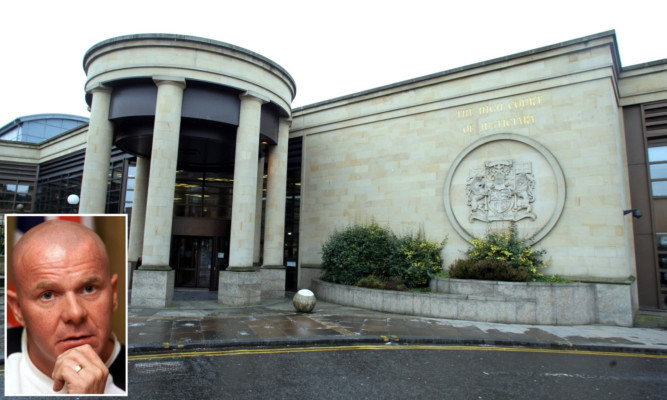Three men have been found guilty of planning to murder former loyalist leader Johnny “Mad Dog” Adair in Scotland.
Anton Duffy, 39, Martin Hughes, 36, and Paul Sands, 32, were convicted of a plot to kill former Ulster Defence Association (UDA) chief Adair and Sam McCrory, after a nine-week trial at the High Court in Glasgow.
Duffy and Hughes were also convicted of terrorism charges while two other men, Craig Convery and Gordon Brown, were found guilty of organised crime charges.
They were arrested in 2013 after two major Police Scotland investigations into terrorism and organised crime.
Duffy, from Donegal, was the ringleader of an unaffiliated active service unit inspired by dissident republicanism and planned to carry out the double murder with Sands and Hughes while on home leave from prison, police said.
Operation Hairsplitter was set up in September 2012 to investigate an attempt to procure firearms, including an AK47, by the gang led by Duffy.
It was feared that if the murders had been carried out it would have had huge ramifications on both sides of the Irish Sea.
Duffy, Sands and Hughes were arrested in October 2013 and charged under the Terrorism Act and also with conspiracy to murder.
In January 2014 Convery and Brown were arrested and charged with directing serious organised crime.
Adair was a leading figure in the UDA during the Troubles in Northern Ireland and moved to Scotland after being released from prison as part of the Good Friday Agreement.
Detective Superintendent Andy Gunn, who led Operation Hairsplitter, said: “Anton Duffy was the main instigator of the plot to kill two men, due to his twisted ideology to further the aims of dissident republican terrorism.
“This was not sanctioned by anyone of a higher authority within those circles, but was driven by Duffy’s own sympathies.
“He is a dangerous man who was determined to see this conspiracy through to its conclusion.
“I have no doubt that were it not for the intervention of the authorities in an operation led by Police Scotland, we would have been left investigating a double murder in an act of terrorism carried out in our communities.
“Duffy had significant influence to persuade his associates to join the conspiracy, prepare for the act of murder and acquire the weapons to carry it out.
“The streets of Scotland are safer now that he, Sands, Hughes, Brown and Convery have been convicted today.
“It brings two complex and challenging Police Scotland investigations to a successful conclusion.”
